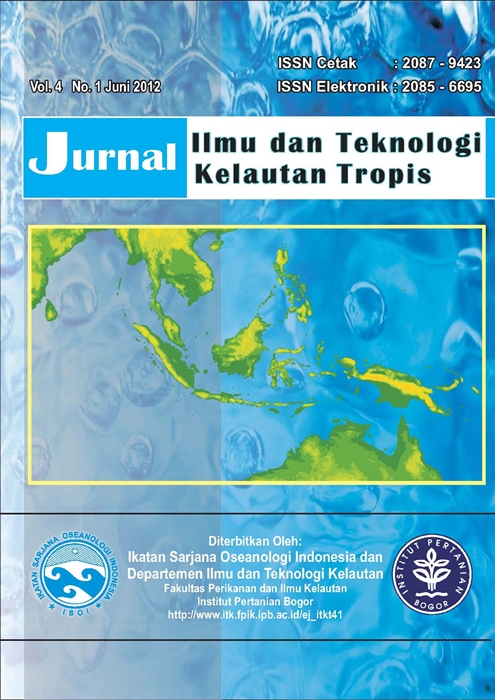CULTURE OF EMPEROR SNAPPER Lutjanus sebae
Abstract
Emperor snapper Lutjanus sebae is one of marine fishery commodities with high economic value, therefore capture rate of this fish is very high. To maintain its sustainability in nature, the culture of this species should be done in proper manner to support their conservation. This study was aimed to determine the culture technology of emperor snapper L. sebae. The eggs for this study was taken from wild broodstocks that have been domesticated in concrete rearing tank. Larval rearing was done in 500 liter polyethylene tank placed in hatchery. Phytoplankton Nannochloropsis oculata was used during larval rearing period. Larvae was fed with zooplanktons such as rotifer Brachionus rotundiformis and copepod Tisbe holothuriae in the beginning of rearing and artemia starting in day 16. Observed parameters were absorption of endogenous energy, preferrence of food, larval growth and survival rate. The result indicated that total length of newly hatched larvae were 2,44-2,63 mm, while yolk sac and oil globule were 179x10-3 - 183 x10-3 mm3 and 0,66x10-3 - 0,67x10-3 mm3, respectively. Yolk sac was absorbed at 60 hours after hatching, while oil globule almost totally absorbed at 80 hours after hatching. Live food rotifers were dominantly preferred by larvae until 10 days old, while copepods and artemia were preferred after 12 and 16 days. Larval rearing period was 22-29 days at water temperature 28.5-30.0°C. Survival rate of larvae were between 1.5 until 2.1%, while juveniles were 84.00-100.00%.
Keywords: Emperor snapper, L. sebae, culture technology
Downloads
The author submitting the manuscript must understand and agree that the copyright of the article manuscript must be submitted/transferred to the Jurnal Ilmu dan Teknologi Kelautan Tropis. This work is licensed under the Creative Commons Attribution-ShareAlike 4.0 (CC BY-SA) International License in which the Author and Reader can copy and redistribute the material in any media or format, and remix, modify and build material for any purpose, but they must provide appropriate credit (citing articles or content), provide a link to the license, and indicate whether there is a change. If you mix, change, or create material, you must distribute your contribution under the same license as the original.



.png)














